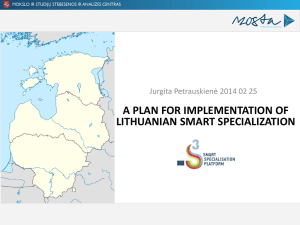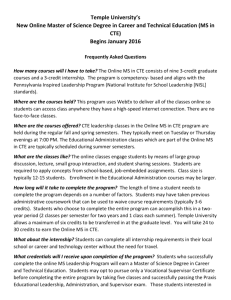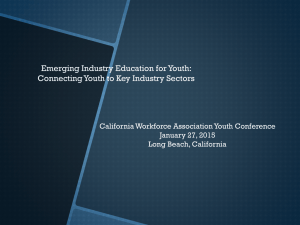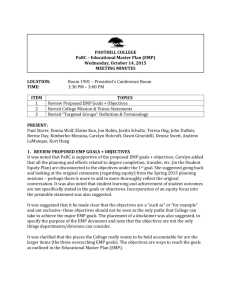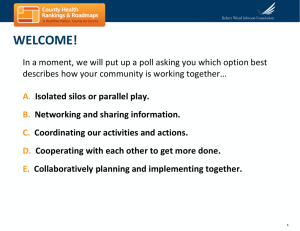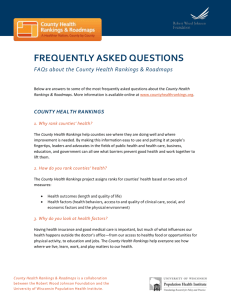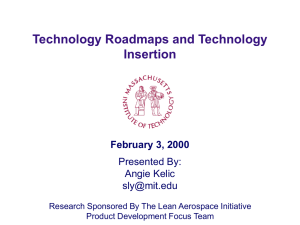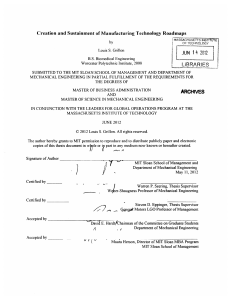Implications Summary
advertisement
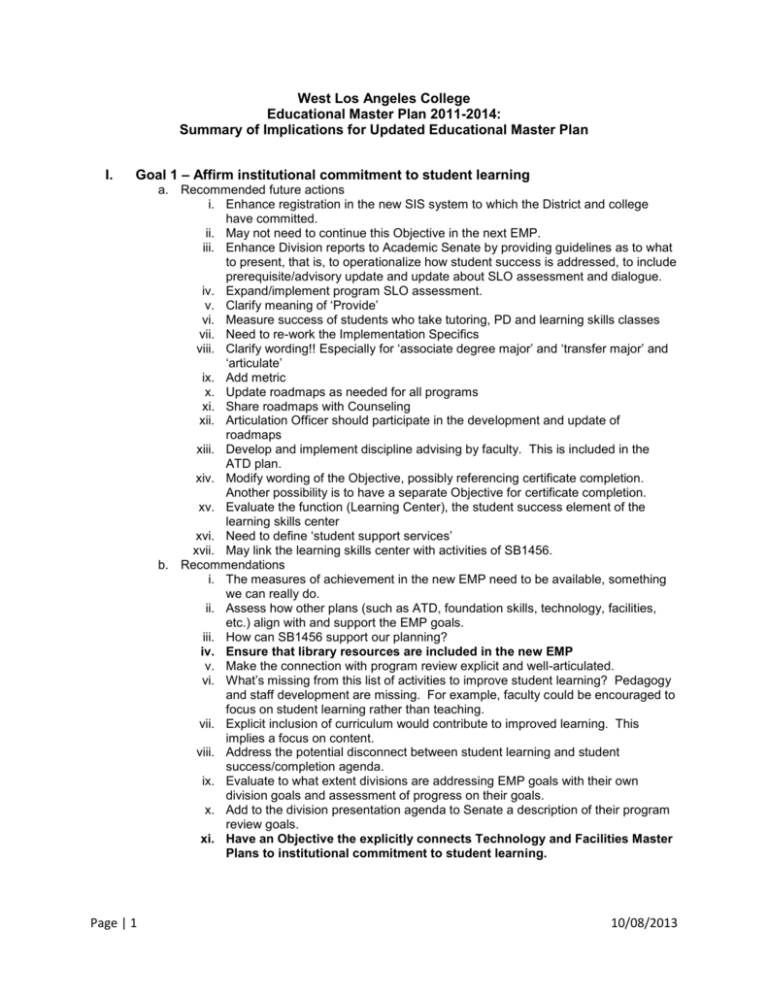
West Los Angeles College Educational Master Plan 2011-2014: Summary of Implications for Updated Educational Master Plan I. Goal 1 – Affirm institutional commitment to student learning a. Recommended future actions i. Enhance registration in the new SIS system to which the District and college have committed. ii. May not need to continue this Objective in the next EMP. iii. Enhance Division reports to Academic Senate by providing guidelines as to what to present, that is, to operationalize how student success is addressed, to include prerequisite/advisory update and update about SLO assessment and dialogue. iv. Expand/implement program SLO assessment. v. Clarify meaning of ‘Provide’ vi. Measure success of students who take tutoring, PD and learning skills classes vii. Need to re-work the Implementation Specifics viii. Clarify wording!! Especially for ‘associate degree major’ and ‘transfer major’ and ‘articulate’ ix. Add metric x. Update roadmaps as needed for all programs xi. Share roadmaps with Counseling xii. Articulation Officer should participate in the development and update of roadmaps xiii. Develop and implement discipline advising by faculty. This is included in the ATD plan. xiv. Modify wording of the Objective, possibly referencing certificate completion. Another possibility is to have a separate Objective for certificate completion. xv. Evaluate the function (Learning Center), the student success element of the learning skills center xvi. Need to define ‘student support services’ xvii. May link the learning skills center with activities of SB1456. b. Recommendations i. The measures of achievement in the new EMP need to be available, something we can really do. ii. Assess how other plans (such as ATD, foundation skills, technology, facilities, etc.) align with and support the EMP goals. iii. How can SB1456 support our planning? iv. Ensure that library resources are included in the new EMP v. Make the connection with program review explicit and well-articulated. vi. What’s missing from this list of activities to improve student learning? Pedagogy and staff development are missing. For example, faculty could be encouraged to focus on student learning rather than teaching. vii. Explicit inclusion of curriculum would contribute to improved learning. This implies a focus on content. viii. Address the potential disconnect between student learning and student success/completion agenda. ix. Evaluate to what extent divisions are addressing EMP goals with their own division goals and assessment of progress on their goals. x. Add to the division presentation agenda to Senate a description of their program review goals. xi. Have an Objective the explicitly connects Technology and Facilities Master Plans to institutional commitment to student learning. Page | 1 10/08/2013 xii. Assess all incoming students in Information Competency (IC). If student does not meet minimum competency level, s/he will need to take and pass Library Science courses or IC Workshops. II. Goal 2. Support students in preparing for transfer a. Comments i. Work with high schools ii. Assessment preparation for high school students iii. Need to have attractive programs to attract college-ready students iv. Roadmaps could be framed as 2+2 roadmaps v. Course outlines still need to be updated to verify the accuracy of prerequisites before we begin electronic enforcement vi. Roadmaps have been developed but still need refining vii. The transfer director began offering transfer support in terms of recognition ceremony, relationships with clubs and programs. viii. Transfer degrees (TMC) are not the only programs we want students to take since they apply to only Cal State universities ix. Unclear what #2 means. Perhaps the articulation officer could provide the relevant transfer major requirements to each Division Chair. “Inform Division Chairs of the requirements in the majors to which our students transfer universities so that they can plan appropriate curriculum and class schedule.” b. Implications i. We obviously have a lot of work to do with this goal in terms of looking at the outcomes listed on the original EMP, but I think we all agree that transfer is important and should be a part of the new EMP. We need a lot more discussion on what a successful transfer program looks like at West and what we can accomplish in a limited amount of time (if we are thinking of this as a strategic plan). For instance, do we really know the relationship between increasing the number of roadmaps and helping students transfer in 2 years? If we go from 2 roadmaps to 10 roadmaps, will we expect a resultant increase in the transfer rate? Development of road maps alone will not get us there. The counts can tell us that efforts are under way, but it's how we use roadmaps that is key. For instance, do we create roadmaps to assist in developing structured, cohorted pathways with support services along the way and the required courses scheduled so that students can take them and complete in two years? It's a more integrated process so we need to re-examine what are the activities and factors involved that truly help a student transfer. Anyway, that's something to consider as we look at the previous measurements that were going to be assessed. ii. The goal of preparing our students for transfer should still be included but we need to clearly define what our objectives will be. For instance, is it only support that helps students transfer? If so, what do we mean when we say “support”? iii. Given the push by legislation such as SB 1440 and the pending legislation mandating implementation of SB 1440 (AB 440), improving our transfer rates is very important. However this goal is now being linked with the broader goal of college completion which SB 1456 encompasses. As we work to ensure that students have adequate preparation in their classes (which SB 1456 does emphasize), we also have to support the academic progress of students as they attempt to complete their educational goals and do more in terms of tracking their progress so that we can provide interventions along the way particularly along GE/transfer pathways. Page | 2 10/08/2013 III. Goal 3. Build on WLAC’s success in Career Technical Educational to improve the whole college. a. Recommendations and evaluation of progress i. In terms of new programs, the state chancellor’s handbook provides step by step guidelines for development of all programs including CTE, credit, non-credit, and General Education certificates and degrees. ii. Change the term Vocational to” Career and Technical Education” document as mentioned by the ACCJC in the new MP; Vocational is a 10 year old term. iii. Increase the # of counselors in CTE/Advisory Board membership iv. Progress in many areas of CTE has been made; the Dean of CTE has provided guidance and structure for developing new programs and tracking employment rates. The SLO Advisors have provided guidance in developing road maps for programs and continuous evaluation of the programs. v. Continue to develop new programs to serve the community vi. Modification of curriculum to meet industry demands. vii. Unsure of written policy for designing a new program, continue the discussion and advisor training for CTE programs, Increase counselor attendance in advisory board meetings. Goal 3 is still strategically important to the college, and because CTE had so much change, it will continue to be a goal. b. Implications i. Old goal as a whole is still strategically important at West and we have not made enough progress on it, so it deserves consideration for the new EMP. However the goal and objective statements need to be revised in an effort to collect pertinent data. ii. Need to include a transfer concept into the CTE program goals that reflects the current requirements of LOWDL and state transfer agenda iii. Need include and improve the transfer pathway of CTE programs to the 4 year institutions. iv. CTE is one of three major instructional purposes of the college. It continues to be very important for the college and its service area, but also has importance in state and federal education planning. It should be a candidate for inclusion in the new plan, but perhaps it should be folded in with Foundation Skills and General Education. It should also have a place with reference to Student Education Planning and faculty and peer advisors. IV. Goal 4. Improve # of students advancing into transfer preparation & Career Technical Education programs by supporting the college’s Foundation Skills Program. a. Recommendations i. Add tutoring and the learning center (supplemental instruction) to any Foundation Skills goal ii. Mention continued support and institutionalization of cohort programs iii. Focus more on completing transfer requirements instead of just transfer iv. Limit class size for foundation skills courses v. Increase DSPS staffing (counselors and/or staff) in order to support instructional faculty for the larger numbers of DSPS students in foundation skills classes vi. Rethink current structure (sequencing, scheduling, etc.) of foundation skills classes (summer bridge classes, assessment prep classes, 4day/wk classes, etc.) vii. Some steps can be taken to get closer to complete Goal 4, and they are planned. b. Implications i. Support for the college’s foundation skills program should be included in the next EMP. ii. 4b does not need to be included in next EMP unless compelling data is presented Page | 3 10/08/2013 iii. 4d is too vague and need not be reprised unless better qualified. iv. 4e is an interesting direction, supported by data from Reading Apprenticeship advocates, and could be one direction to take. v. If 4g is important to us to keep in next EMP, reward it more specifically, e.g. “Fund/support ESL program for success.” vi. Goal 4 itself could perhaps be simplified. vii. To the degree that this goal is about 1st Year Experience, Bridge Programs, and Learning Communities, the college should evaluate what it has done and should consider the development, implementation, and operation of these programs as well as formal evaluations of them. They might be “Actions” in the new terminology, as measures of enhancing student success. V. Goal 5. Ensure highest levels of educational quality within West’s diversified modes of instructional delivery a. Recommendations i. Evaluate ESL classes paired with content classes to see if pairing students with content classes improved success rates in subsequent ESL classes, content classes and English 101. ii. Solve the problem that online students have getting ESL, English and Math assessment by accepting assessment scores from other community colleges. Currently students have no such option and are required to come to campus. Add synchronous online communication options for students who need financial aid assistance. Currently students have difficulty getting responses by phone or email. iii. Clarify implement; enforce, support, offer? Train Division Chairs to better evaluate online instructors. iv. Consider making all classes hybrid (that is, add an online component to face-toface classes.) v. Encourage students to take DE orientation course. vi. Consider providing Honors sections of selected courses vii. Consider adopting ACE viii. Solve the problem that online students have getting ESL, English and Math assessment by accepting assessment scores from other community colleges. Currently students have no such option and are required to come to campus. Add synchronous online communication options for students who need financial aid assistance. Currently students have difficulty getting responses by phone or email. ix. Clarify implement; enforce, support, offer? Train Division Chairs to better evaluate online instructors. x. Consider the development of online resources for use by multiple instructors: whole classes? Learning objects? xi. Work with chairs to establish methods of systematically evaluating online instruction xii. Consider the capacity of Plato licenses to accommodate student demand. xiii. Consider enabling Etudes shells to link to Plato. xiv. Designate computers in LIRL with priority for online students xv. Provide keys to faculty and staff who use facilities, to avoid time lost waiting for the sheriff to open library and classrooms. xvi. Consider hybrid Learning Skills classes. b. Evaluation and Implications i. Web enhancement is now part of most classes. The need for an instructional designer with appropriate hardware and software is more pronounced. ii. What about MOOCs? Page | 4 10/08/2013




